#エドワードSモース
Explore tagged Tumblr posts
Text
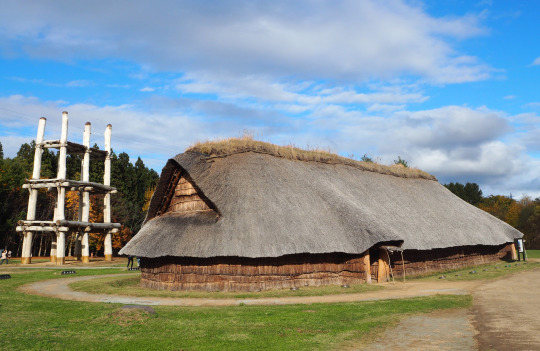


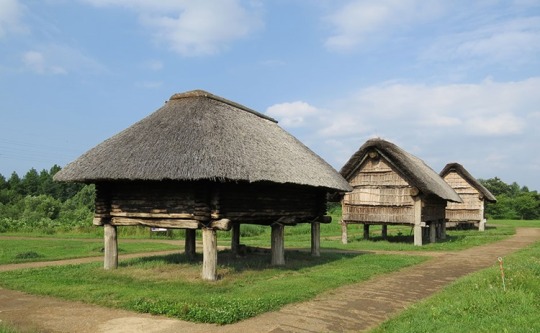
Sean bienvenidos, japonistasarqueologicos, al tercer capítulo del Japón prehistórico y seguir recorriendo sus lugares mitológicos y mágicos, una vez dicho esto póngase comandos que empezamos. - Para continuar nuestro viaje, más vale tarde que nunca, pero despacio y con buena letra. Nos trasladamos al yacimiento arqueológico de Sannai Maruyama en la prefectura de Aomori, localizada en la región de Tōhoku. - La estructura, de madera, data del periodo jomon, es una estructura que funcionó como un gran calendario, ya que algo común que tienen todas las culturas en el mundo es adorar a las estrellas en lo que respecta a la prehistoria. El yacimiento data del 3900 a.c localizado a lo largo del río Okidate en la punta de una suave colina que se extiende desde las montañas Hakkoda. - En la década de 1992, tuvieron lugar las excavaciones que han desenterrado los restos de viviendas en pozos, tumbas de adultos, niños y los pozos de almacenamiento, entre otros rastros de la vida cotidiana. Además de una hay una gran cantidad de herramientas de loza de piedra. Se han excavado una gran variedad de huesos de pescado y de animales que indican hábitos alimenticios de aquella gente, también fueron encontrados frutos secos: como castañas y nueces. Además, se han desenterrado muchas reliquias orgánicas, como productos de madera, herramientas de hueso, canastas tejidas, así como artículos comerciales como jade, obsidiana de áreas remotas y asfalto. Hay una teoría: en Iwate se crean estructuras similares para realizar la danza de los ciervos ¿Qué opinan al respecto? _ Espero que os haya gustado y nos vemos en próximas publicaciones mis amantes del mundo japonés, que pasen una buena semana. - 考古学者の日本主義者の皆さん、先史時代の日本の第 3 章へようこそ、神話と魔法の場所を旅し続けてください。 - 旅を続けるには、遅刻しないよりはマシですが、ゆっくりと上手な字で。 東北地方にある青森県の三内丸山遺跡へ移動します。 - この木造建造物は縄文時代にまで遡り、先史時代から世界のどの文化にも共通して星を崇拝しており、偉大な暦として機能していた建造物です。 この遺跡は、八甲田山系から続くなだらかな丘陵の先端、沖館川沿いに位置し、紀元前 3900 年に遡ります。 - 1992 年代に発掘調査が行われ、井戸内の住居跡、大人、子供の墓、貯蔵穴、その他の日常生活の痕跡が発掘されました。 1 つ以外にも多数の石器の道具があります。 当時の人々の食生活を示す魚や動物の骨が多数出土しており、栗やクルミなどの木の実も出土しています。 さらに、木製品、骨道具、編んだかごなどの有機遺物や、翡翠、辺境の黒曜石、アスファルトなどの交易品も発掘されています。 岩手でも鹿踊りをするために同じような建物が作られているという説がありますが、どう思いますか? _ 日本の世界を愛する皆さん、良い一週間をお過ごしください。 - Welcome, archaeological Japanists, to the third chapter of prehistoric Japan and continue touring its mythological and magical places. Having said that, put yourself in command and let's begin. - To continue our journey, better late than never, but slowly and with good handwriting. We move to the Sannai Maruyama archaeological site in Aomori prefecture, located in the Tōhoku region. - The wooden structure dates back to the Jomon period, it is a structure that functioned as a great calendar, since something common that all cultures in the world have is worshiping the stars in regards to prehistory. The site dates back to 3900 BC located along the Okidate River at the tip of a gentle hill that extends from the Hakkoda Mountains. - In the 1992s, excavations took place that unearthed the remains of dwellings in wells, graves of adults, children and storage pits, among other traces of daily life. In addition to one there are a large number of stoneware tools. A wide variety of fish and animal bones have been excavated that indicate the eating habits of those people. Nuts such as chestnuts and walnuts were also found. In addition, many organic relics have been unearthed, such as wooden products, bone tools, woven baskets, as well as trade items such as jade, obsidian from remote areas, and asphalt. There is a theory: in Iwate similar structures are created to perform the deer dance. What do you think about it? _ I hope you liked it and see you in future posts my lovers of the Japanese world, have a good week.
#日本#先史時代#地理#歴史#文化#考古学#縄文時代#天文学#記号学#���新世#エドワードSモース#日本の石器時代#ユネスコ#-#Japan#Prehistory#Geography#History#Culture#Archaeology#Jomon Period#Astronomy#Semiotics#Pleistocene#Edward S. Morse#Japanese Stone Age#UNESCO
57 notes
·
View notes
Photo
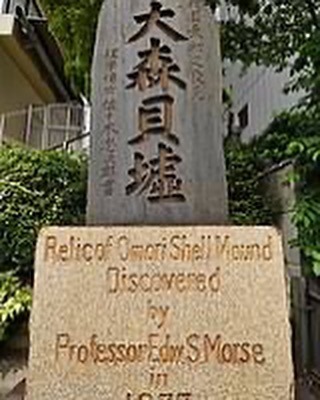
👨🎓06/18考古学出発の日🇯🇵 1877年のこの日、大森貝塚を発見・発掘したアメリカの動物学者エドワード・S・モースが来日したことを記念。6月20日、モースが汽車で横浜から新橋へ向かう途中、大森駅を過ぎてすぐの崖に貝殻が堆積しているのを発見し、まもなく発掘調査が行われました。これが日本初の科学的な発掘調査で、日本の考古学の出発点となりました。 https://youtu.be/IczJA7AqbD0 👨🎓 06/18 Archeology Departure Day 🇯🇵 To commemorate the arrival of the American zoologist Edward S. Morse, who discovered and excavated the Omori Shell Mound on this day in 1877. On June 20, on the way from Yokohama to Shimbashi by train, Morse discovered that shells had accumulated on the cliff just past Omori Station, and an archaeological survey was conducted shortly thereafter. This was Japan's first scientific archaeological excavation and was the starting point for Japanese archeology. https://www.instagram.com/p/Ce70g0WPAVs/?igshid=NGJjMDIxMWI=
0 notes
Text
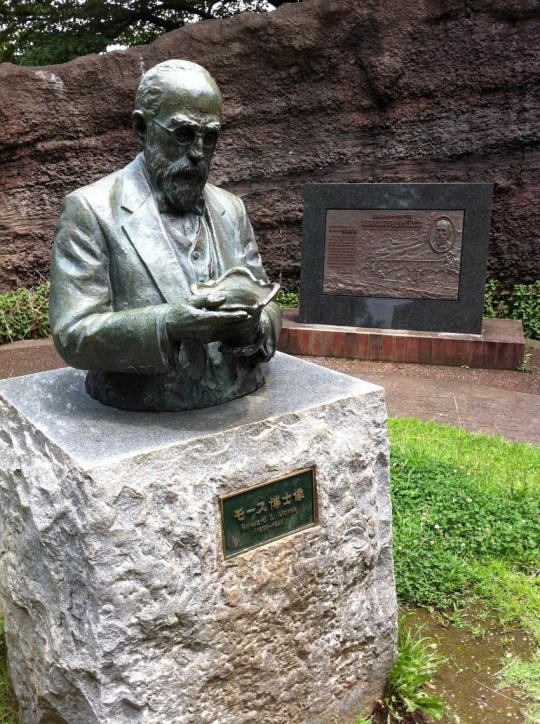
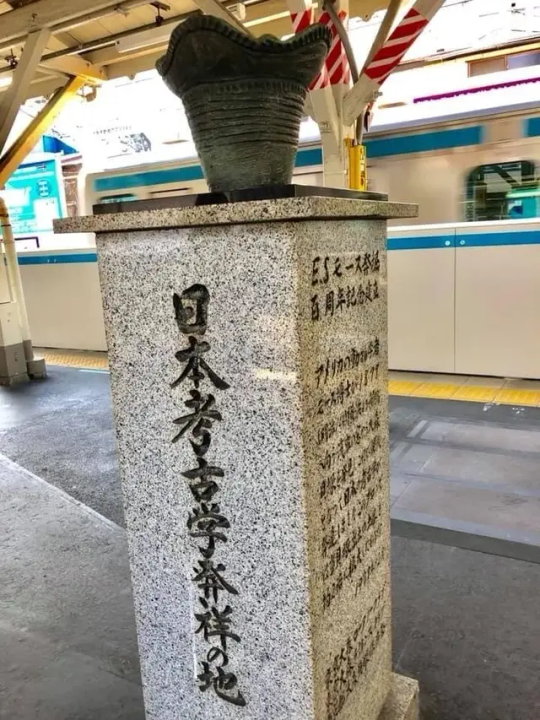

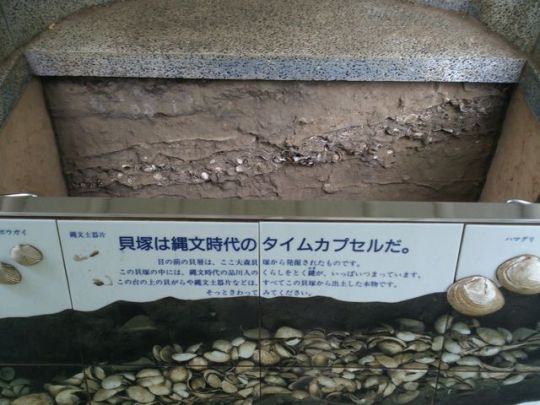
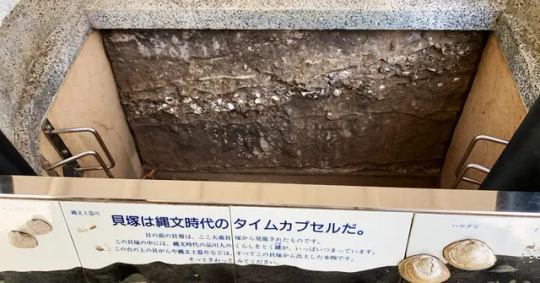
Sean bienvenidos japonistasarqueológicos, a una nueva entrega de arqueología japonesa, una vez dicho esto pónganse cómodos que empezamos. - En esta ocasión os voy a presentar al padre de la arqueología moderna japonesa Edward.S.Morse, zoólogo estadounidense del siglo XIX y gran apasionado por el mundo japonés, su hallazgo más relevante fue el montículo de conchas de Omori, cuando lo divisó desde el tren ha raíz de dicho hallazgo, fue venado descubrió la cultura prehistoria Jomon. - En la foto se puede apreciar el Montículo de conchas Omori en el momento de la excavación de Morse, en el año 1878 aproximadamente. ¿Lo conocían? - Espero que os haya gustado y nos vemos en próximas publicaciones, que pasen una buena semana. - 日本の考古学者たちよ、ようこそ。そう言われたら、くつろいで、さっそく始めましょう。 - 今回は、近代日本考古学の父、エドワード・S・モース(19世紀アメリカの動物学者で、日本の世界をこよなく愛した人物)を紹介します。彼の最も重要な発見は、大森貝塚で、汽車から貝塚を発見したとき、先史時代の縄文文化を発見したのです。 - 写真は、1878年頃、モースが発掘した当時の大森貝塚です。 ご存知でしたか? - 気に入っていただけたでしょうか、また今後の記事でお会いしましょう、良い一週間をお過ごしください。 - Welcome, Japanese archaeologists, to a new installment of Japanese archaeology, and once that's been said, make yourselves comfortable and let's get started. - On this occasion I am going to introduce you to the father of modern Japanese archaeology Edward.S.Morse, 19th century American zoologist and great enthusiast for the Japanese world, his most relevant find was the Omori shell mound, when he spotted it from the train, he discovered the prehistoric Jomon culture. - The photo shows the Omori shell mound at the time of Morse's excavation in about 1878. Did you know it? - I hope you liked it and see you in future posts, have a nice week.
#日本#先史時代#旧石器時代#上毛時代#考古学#ユネスコ#遺跡#横浜#新橋#エドワードシルベスターモース#大森貝塚#日本史#-#japan#prehistory#palaeolithic#Jomoperiod#archaeology#unesco#archaeologicalsite#Yokohama#Shimbashi#EdwardSylvesterMorse#Omorishellmound#Japanesehistory
12 notes
·
View notes
Photo

👨🎓2021/06/18(金)考古学出発の日🇯🇵 1877年のこの日、大森貝塚を発見・発掘したアメリカの動物学者エドワード・S・モースが来日したことを記念。6月20日、モースが汽車で横浜から新橋へ向かう途中、大森駅を過ぎてすぐの崖に貝殻が堆積しているのを発見し、まもなく発掘調査が行われました。これが日本初の科学的な発掘調査で、日本の考古学の出発点となりました。 https://youtu.be/IczJA7AqbD0 👨🎓 2021/06/18 (Fri) Archeology Departure Day 🇯🇵 To commemorate the arrival of the American zoologist Edward S. Morse, who discovered and excavated the Omori Shell Mound on this day in 1877. On June 20, on the way from Yokohama to Shimbashi by train, Morse discovered that shells had accumulated on the cliff just past Omori Station, and an archaeological survey was conducted shortly thereafter. This was Japan's first scientific archaeological excavation and was the starting point for Japanese archeology. https://www.instagram.com/p/CQPOF3-N5nv/?utm_medium=tumblr
0 notes